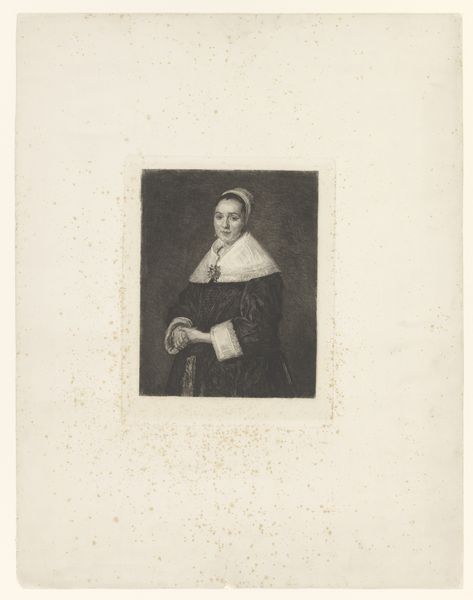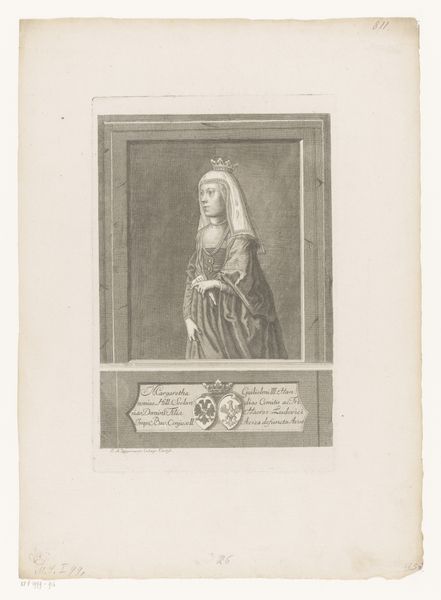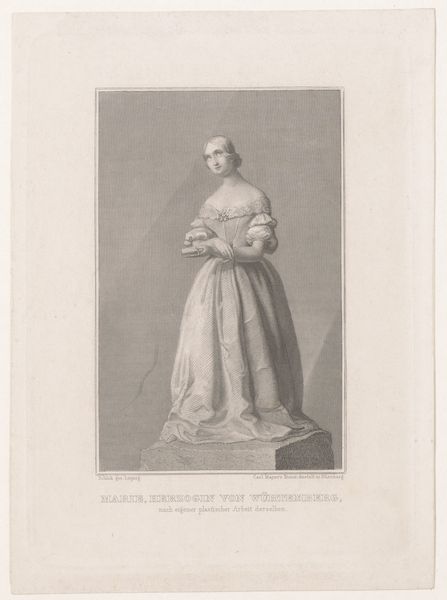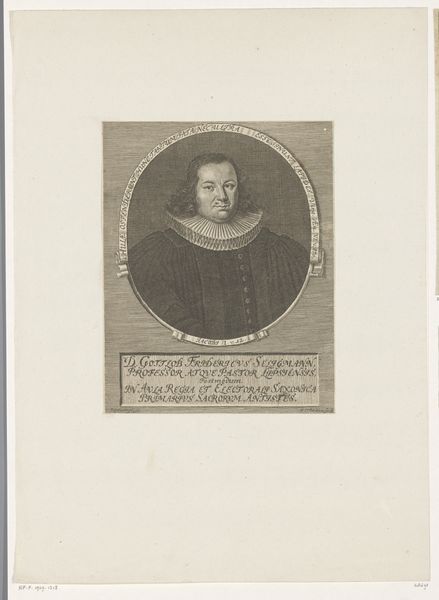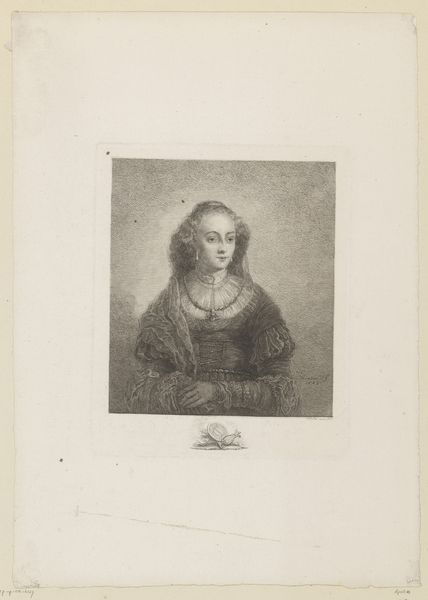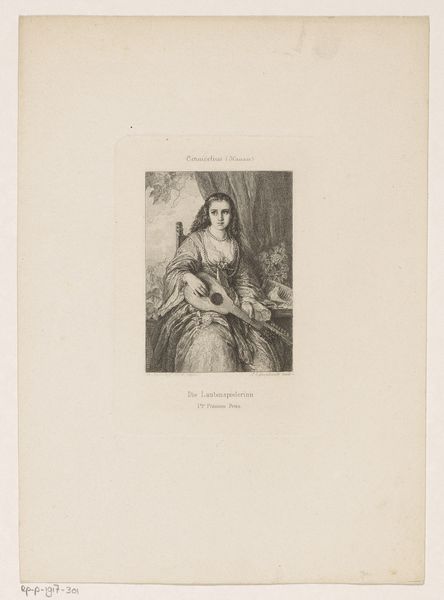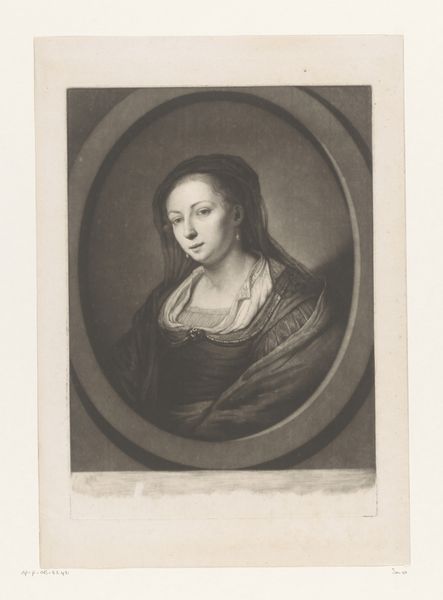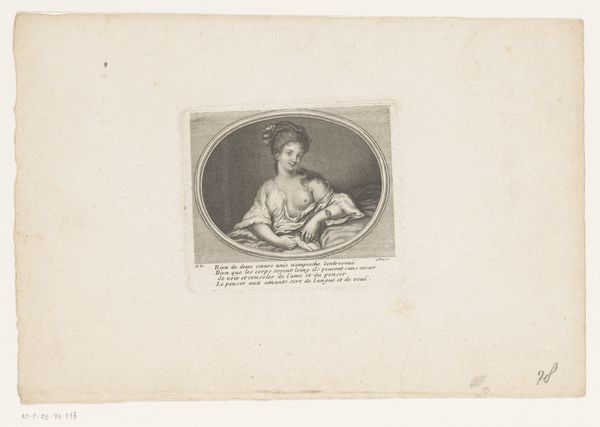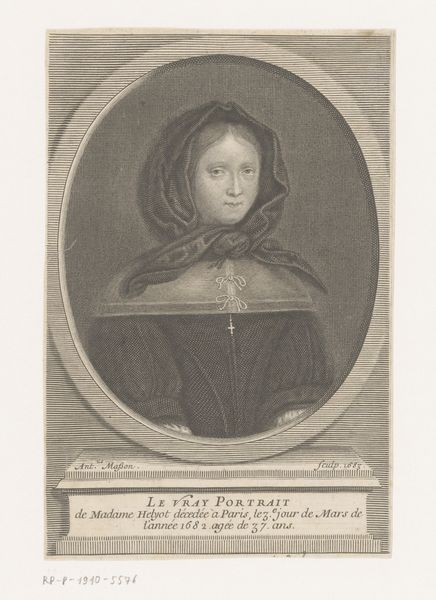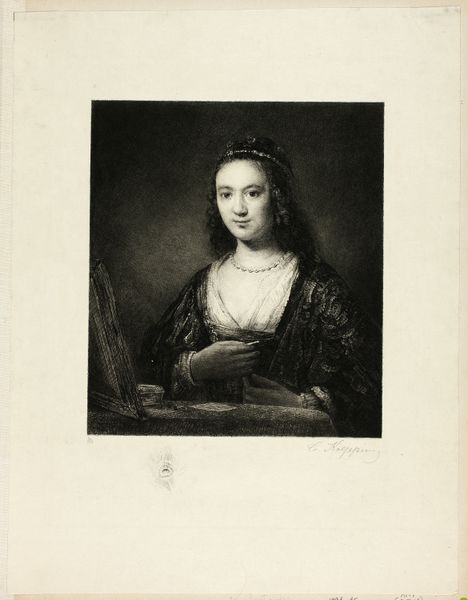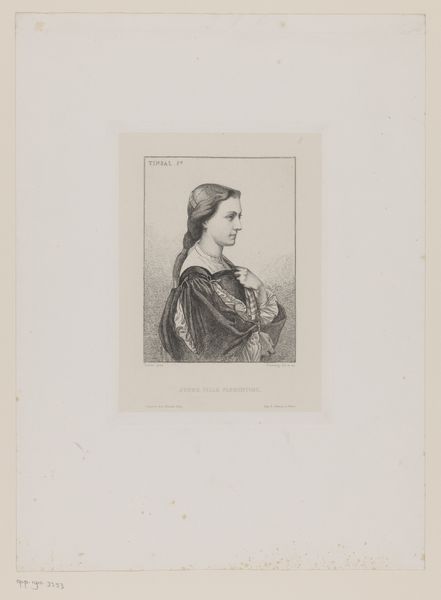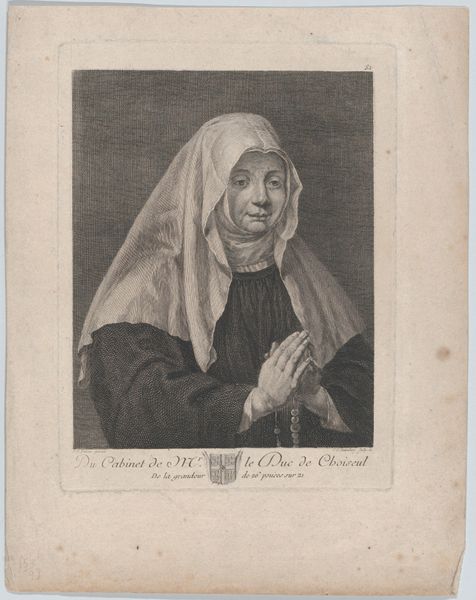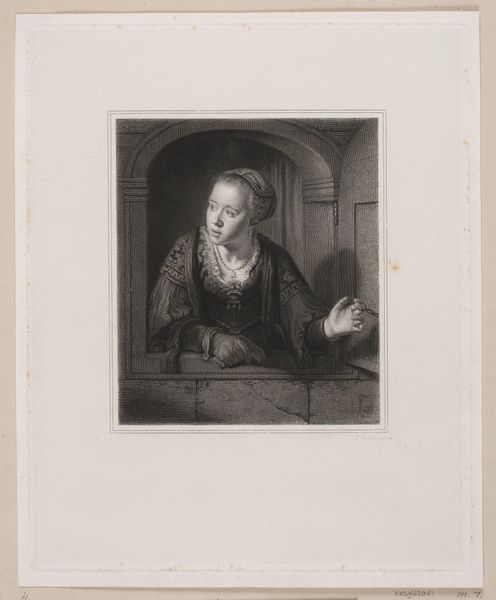
print, etching, engraving
#
portrait
#
baroque
# print
#
etching
#
engraving
#
realism
Dimensions: height 328 mm, width 220 mm
Copyright: Rijks Museum: Open Domain
Editor: So, this is "Portret van Esther Barbara von Sandrart," made in 1727 by Georg Daniel Heumann. It's an etching and engraving, which is really impressive given the level of detail. There's something solemn about her, a quiet dignity maybe. How would you interpret this work? Curator: Well, seeing a portrait like this, it's important to think about its function within 18th-century society. Prints like these were crucial for disseminating images and ideas. This wasn’t just a likeness of Esther Barbara von Sandrart; it was a statement about her status, lineage, and perhaps her intellectual contributions. Notice how the objects on the table might symbolize her interests or accomplishments? Editor: Yes, it looks like art supplies – paints or maybe pastels? The print itself, being an engraving, feels like it's participating in that dialogue about art making. Does the text at the bottom tell us anything specific? Curator: Absolutely. Texts on prints often framed how the sitter wished to be perceived. Looking at the poem we see the artist emphasizes her celebrated 'Sandrart' marital link; furthermore it implies her reputation precedes her via allusions to ingenious skills. The poem functions as social strategy via cultural validation! Now, do you see any elements that hint at larger artistic debates happening at the time? Editor: Hmm, the realism, maybe? I'm not sure I can connect the dots to "debates," though. Curator: Consider the rising merchant class and their increasing patronage of the arts. Portraiture became a means of self-fashioning, of publicly declaring one's success. This image of Esther is less about divine right, but alluding via attributes/talent a shift toward portraying accomplishments, hinting at cultural values embraced by a changing society. It tells us as much about the social role of the subject as the image itself! Editor: That's fascinating! I hadn't considered the social implications so directly, but that really contextualizes it. Curator: Exactly! It’s not just art; it's history, society, and politics all wrapped into one image.
Comments
No comments
Be the first to comment and join the conversation on the ultimate creative platform.
